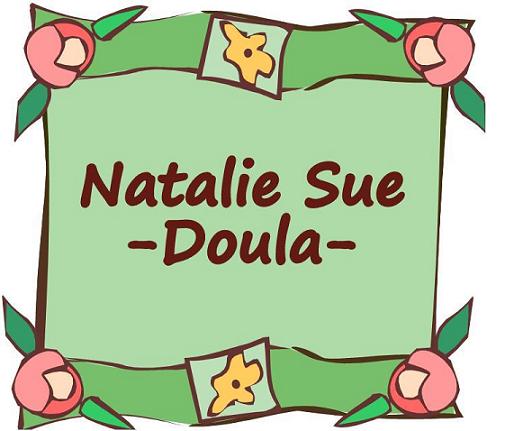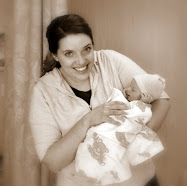“If I were at home, I would have died” — The trouble with Extrapolating Hospital Birth Events to Homebirth
March 31, 2011 by erinmidwife
A midwife in North Carolina was recently charged with practicing midwifery without a license because her state does not license Certified Professional Midwives (CPMs) and other direct entry midwives. There was some local news coverage of the arrest and the ongoing efforts of North Carlina families to legalize CPMs. One of the local news stories contained the “If I were at home, I would have died” sentiment.
When I hear statements like this I cringe on the inside. Being a midwife, I hear it a lot. Women love to talk about their birth stories, naturally. In the park, at mom’s groups, among new friends, anywhere women gather there are stories of births and babies being told. When a mother begins telling me her story from the “I would have died at home” perspective, I nod with empathy and say mmm hmm.
A typical hospital birth hook-up: pitocin to speed up labor, epidural medication, and an IV bag. Pitocin use in labor makes women more likely to hemorrhage after birth.
It’s a bit of a double bind (midwives and doulas — you know what I am talking about). Every woman’s story is inherently valid and it is her story to tell, her journey. On the other hand, my inner advocate of truth wants to illuminate the myths and realities of the hospital birth industry. In these moments I strive to listen with deep gratitude, kindness and love. The best I can do is to honor the mother’s feelings and experiences while side-stepping all the nuts and bolts of the “I/we would have died” argument. That can get messy; So often, it is the unnecessary interventions that cause the emergencies.
But since it’s coming up in the again in the media and a larger audience of women is hearing such emotionally charged statements about homebirth, it’s time to get messy. Why do women in the US die while giving birth? No one knows for certain because our reporting methods for maternal mortality are so abysmal. We think, based on fractured US statistics and older studies, that the primary causes of death to women during birth or shortly after are thromboembolism, preeclampsia/eclampsia, hemorrhage, infection, and anesthesia deaths.
Lets look at hemorrhage because it is the most likely to occur in a homebirth setting, though the risk is extremely small when compared with hospital birth.
Here are a few reasons why. Homebirth and hospital birth are supported by two divergent models of care. The homebirth model subscribes to the philosophy of don’t fix what isn’t broken: natural processes generally work best when they are not interfered with. The medical model subscribes to the (more profitable) philosophy of action: pregnancy and birth are conditions that require fixing. All actions and interventions have consequences. Many of the interventions in a typical hospital birthcause complications, like hemorrhage. These interventions do not happen at home.
Immediate postpartum interventions can also lead to hemorrhage. The period just after birth is a unique and potent time biologically for the mother and baby. A natural flood of hormones connects mother and baby physically and emotionally, and helps the mother safely birth her placenta. The mother’s hormone levels will never be as high as this hour after birth; and when this flow is is disrupted the mother is more likely to bleed excessively.
Interventions during this immediate postpartum time are routine in a hospital setting: failing to give the baby to the mother immediately, assessing the baby away from the mother, pulling on the umbilical cord, changing the mother’s position to suit the care provider, diverting the mother’s attention away from the baby, clamping and cutting the umbilical cord without any good reason to do so, etc.
Midwives honor the biological importance of the hormonal bubble after birth and do not intervene unless the mother or baby needs help.
In a typical homebirth, mother and baby are undisturbed after birth. The midwife does not unnecessarily poke, prod, clamp, or otherwise interfere with the mother and baby unit.
When you hear someone say “I would have died if I had a homebirth” or “my baby would have died” please remember that these are very emotionally charged declarations. In many cases, unnecessary interventions have causedthe complications that women and babies suffer from. (The CDC has estimated that half of maternal deaths are preventable).
You can’t simply cut and paste all the circumstances surrounding a given hospital birth, superimpose them on a homebirth setting, and predict the same outcome — or vice versa. The models of care are too divergent. Women can die from birth complications in any setting, and our hospital death rate from birth-related causes is indefensibly high. We know that low-risk women are as safe, if not safer, birthing at home.
The United States ranks 41st in maternal mortality among nations. That means in 40 other countries, women are less likely to die from pregnancy and birth related causes. The CDC also states that half of the reported deaths were preventable and that death rates are underreported by almost a third. On April 9th the Healthy Mothers Healthy Birth Summit will convene in Washington D.C. to examine the clinical and political issues surrounding maternal death in the United States.



No comments:
Post a Comment